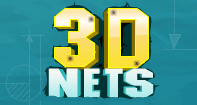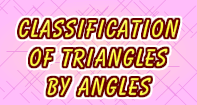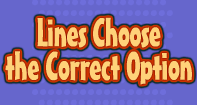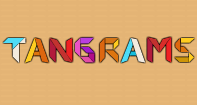Login as parent/teacher to assign this.
Geometric Shape Games
Geometric Shapes for Elementary School Learners
All children start with learning basic shapes - circle, square, triangle, and rectangle. They begin to see shapes in the world around them with practice. Shape matching games can help them to increase these skills as well.
Students learn to identify shapes and match those that differ in basic characteristics. They will also learn to sort 2d shapes. Shape games online can help them gain an extra edge when they enter the classroom.
Students learn to identify shapes and match those that differ in basic characteristics. They will also learn to sort 2d shapes. Shape games online can help them gain an extra edge when they enter the classroom.
Basic Shapes
Fun shape activities can get students interested in learning more. Start with hands-on activities and toys like play dough or shape mats in your lesson plans. Shape scavenger hunts are fun where students must identify shapes in their environment. Another favorite are memory games where they must remember where the two matching shapes are located.
Basic shapes students will learn include:
Basic shapes students will learn include:
Square
A square has four equal sides and four right angles. All squares are rectangles and parallelograms. They also are within the rhombus family.
Triangle
A triangle has three sides and three angles.
Rectangle
A rectangle has four sides, two pairs of equal length, and four right angles. All rectangles are parallelograms.
Circle
A circle has no sides and no angles.
3D Shapes in Preschool
Preschoolers amp up this learning with more complex shapes, moving from 2D to 3D shapes. 2D shapes begin with the basics and then add more sides and angles. Shape sensory bins can be a fun activity to learn the feel of 3D shapes.
Turtle Diary offers a variety of shape games for preschoolers to solidify these concepts before they enter formal school. Learning to match shapes in both dimensions is a skill to master at this level.
3D shapes students may learn to recognize include:
Turtle Diary offers a variety of shape games for preschoolers to solidify these concepts before they enter formal school. Learning to match shapes in both dimensions is a skill to master at this level.
3D shapes students may learn to recognize include:
Cube
6 faces with 12 edges and 8 vertices; all sides are equal length and all faces are square.
Sphere
Spheres have 0 or 1 faces, with no edges and no vertices.
Cone
1 or 2 faces, with 0 or 1 edges and 1 apex (point).
Playing games online is a fun interactive activity for kids that helps to develop their fine motor skills.
Complex Shapes in Kindergarten
Shape games for kindergarten become more complex with shape puzzles like Tangrams.
More advanced shapes in games like tangrams include:
Rhombus
Rhombii have four equal sides, the opposite pairs being parallel. They are all parallelograms.
Parallelogram
Parallelograms have two pairs of parallel sides and usually no line of symmetry.
Kite
Kites have 2 equal pairs of adjacent sides.
Ellipse (Oval)
Ellipses are like circles, but with 2 lines of symmetry.
Crescent
Crescents are created when two circles overlap creating two circular arcs. It may sometimes be called a moon..
Complex Geometric Shapes
As kids get older games get more challenging. They explore shapes in a variety of ways looking at 2D solid shapes and their 3D counterparts. 3D shape games help students visualize the world on a different axis. They have to be able to manipulate and turn the shape mentally in order to succeed in geometry.
Triangles
Angles in shapes become important when learning about triangles. All angles within a triangle total 180° when added together. Triangles are classified by the types of angles and the length of their sides.
Equilateral contains 3 sides of equal length with all angles measuring 60°.
Isosceles contain 3 sides, but only two sides and angles of equal length.
Scalene contains no equal sides and no equal angles.
Right contains one right angle measuring 90°.
Obtuse contains one angle greater than 90° (obtuse) and two less-than-90° angles (acute).
Acute contains all three angles less than 90° (acute).
Equilateral contains 3 sides of equal length with all angles measuring 60°.
Isosceles contain 3 sides, but only two sides and angles of equal length.
Scalene contains no equal sides and no equal angles.
Right contains one right angle measuring 90°.
Obtuse contains one angle greater than 90° (obtuse) and two less-than-90° angles (acute).
Acute contains all three angles less than 90° (acute).
Polygons
Students will also begin to identify the difference between larger polygons. They may also explore the difference between regular and irregular polygons. Irregular polygons have the same number of sides as their counterpart but are either concave or convex in shape. Polygons are classified by the number of sides and interior angle measurements.
Examples of larger polygons include:
Pentagon - 5 sides with 108° angles. Interior angles equal 540°.
Hexagon - 6 sides with 120° angles. Interior angles equal 720°.
Heptagon - 7 sides with 128.6° angles. Interior angles equal 900°.
Octagon - 8 sides with 135° angles. Interior angles equal 1080°.
Nonagon - 9 sides with 140° angles. Interior angles measure 1260°.
Decagon - 10 sides with 144° angles. Interior angles measure 1440°.
Hendecagon - 11 sides with 147.3° angles. Interior angles measure 1620°.
Dodecagon - 12 sides with 150° angles. Interior angles measure 1800°.
TurtleDiary.com has the best educational tools you will need to help your students learn shapes in both 2D and 3D format. Let them practice their shape learning while having loads of fun with colorful graphics and entertaining sounds.
Examples of larger polygons include:
Pentagon - 5 sides with 108° angles. Interior angles equal 540°.
Hexagon - 6 sides with 120° angles. Interior angles equal 720°.
Heptagon - 7 sides with 128.6° angles. Interior angles equal 900°.
Octagon - 8 sides with 135° angles. Interior angles equal 1080°.
Nonagon - 9 sides with 140° angles. Interior angles measure 1260°.
Decagon - 10 sides with 144° angles. Interior angles measure 1440°.
Hendecagon - 11 sides with 147.3° angles. Interior angles measure 1620°.
Dodecagon - 12 sides with 150° angles. Interior angles measure 1800°.
TurtleDiary.com has the best educational tools you will need to help your students learn shapes in both 2D and 3D format. Let them practice their shape learning while having loads of fun with colorful graphics and entertaining sounds.
Our Educational Resources
Math Games
- Addition
- Area and Perimeter
- Decimals
- Division
- Fractions
- Shapes
- Geometry
- Multiplication
- Number
- Roman Numerals
- Statistics
- Subtraction
- Time
- Units of Measurement














